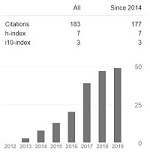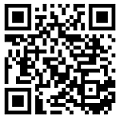Analisis Faktor-faktor yang Mempengaruhi Keputusan Ekonomi Rumahtangga Petani Padi Sawah di Kecamatan Bangkinang Kabupaten Kampar
Sari
Secara umum penelitian ini bertujuan untuk menganalisis faktor-faktor yang berpengaruh terhadap keputusan ekonomi rumahtangga petani padi sawah terkait dengan produksi, alokasi waktu kerja, pendapatan, dan pengeluaran. Pendekatan ekonometrika model persamaan simultan dengan metode Two-Stage Least Square (2SLS) digunakan untuk menjawab tujuan penelitian. Faktor- faktor yang mempengaruhi produksi, alokasi waktu kerja, pendapatan, dan pengeluaran yaitu upah, harga input, harga output, umur, pendidikan, pengalaman kerja, angkatan kerja keluarga, jumlah anggota keluarga, dan jumlah anak sekolah. Data yang digunakan adalah data cross section tahun 2016 yang diperoleh dari wawancara langsung dengan 45 petani padi sawah di Kecamatan Bangkinang. Temuan utama dari penelitian ini menunjukkan Peubah total tenaga kerja dalam usaha responsif mempengaruhi produksi. Alokasi waktu kerja dipengaruhi secara responsif oleh pendapatan dalam usahatani padi sawah. Sementara itu, tidak ada peubah yang responsif mempengaruhi pendapatan luar usahatani padi sawah. Pengeluaran rumahatangga dipengaruhi secara responsif oleh pendapatan total rumahtangga, tabungan, total curahan kerja rumahtangga, dan konsumsi total rumahtangga.
This research aims to analyse factors affecting the economic household decision of paddy farmers, associated with production, allocation of working time, income and expenditure. An econometric model of simultaneous equations approach to the Two-Stage Least Square method (2SLS) was used to answer the research objectives. The factors that influence the production, allocation of work time, income, and expenses are wages, input prices, output prices, age, education, work experience, family labour force, the number of family members, and the number of school children. The data used was the 2016 cross-section data obtained by interviewed 45 paddy farmers in Bangkinang Sub-district. The main findings of this research showed variable of the used labour was responsive respect to production. Allocation of working time was responsive respected by the income of paddy farming. In the other hand, there was no variable that responsive respect to income for non-paddy agriculture. Expenditures of the household were responsively respected by total income, saving, the total of working time allocation and total consumption.
Kata Kunci
Teks Lengkap:
PDFReferensi
Becker, G.S. 1965. A Theory of The Allocation of Time. The Economic Journal 75(299): 493-517. https://doi.org/10.2307/2228949
Becker, G.S. 1976. The Economic Approach to Human Behaviour. London: The University of Chicago Press. https://doi.org/10.7208/chicago/9780226217062.001.0001
De Janvry, Alain, M. Fafchamps, and E. Sadoulet. 1991. Peasant Household Behaviour with Missing Markets: Some Paradoxes Explained. The Economic Journal 101(409): 1400-1417. https://doi.org/10.2307/2234892
Grossbard, S.A. 2010. Independent Individual Decision-Makers in Household Models and the New Home Economics. IZA Discussion Paper 5138: 1-15. https://ssrn.com/abstract=1663178
Hernanto, F. 1996. Ilmu Usahatani. Jakarta: Penebar Swadaya.
Singh, I., L. Squre, and J. Strasuss. 1986. A Survey of Agricultural Household Models: Recent Findings and Policy Implication. The World Bank Economic Review 1(1): 149-179. https://doi.org/10.1093/wber/1.1.149
Sukirno, S. 2002. Pengantar Teori Mikroekonomi. Jakarta: Raja Grafindo Persada.
DOI: http://dx.doi.org/10.31258/sorot.13.2.85-92
Refbacks
- Saat ini tidak ada refbacks.
##submission.copyrightStatement##
##submission.license.cc.by4.footer##
Hak cipta artikel-artikel pada jurnal ini dimiliki oleh penulis, dan penulis bersedia memberikan hak penerbitan pertama kepada jurnal. Pemilikan hak cipta dilisensikan dibawah Creative Commons Attribution 4.0 International License. Lisensi ini memungkinkan penggunaan, pendistribusian, dan pencetakan kembali tanpa batas pada media apa pun, asalkan penulis dan sumber sebenarnya disebutkan.





